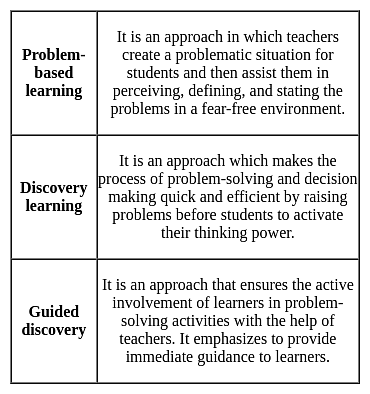CTET & State TET Exam > CTET & State TET Tests > CDP (Child centered and Progressive Education) - CTET & State TET MCQ
CDP (Child centered and Progressive Education) - CTET & State TET MCQ
Test Description
10 Questions MCQ Test - CDP (Child centered and Progressive Education)
CDP (Child centered and Progressive Education) for CTET & State TET 2024 is part of CTET & State TET preparation. The CDP (Child centered and Progressive Education) questions and answers have been prepared
according to the CTET & State TET exam syllabus.The CDP (Child centered and Progressive Education) MCQs are made for CTET & State TET 2024 Exam.
Find important definitions, questions, notes, meanings, examples, exercises, MCQs and online tests for CDP (Child centered and Progressive Education) below.
Solutions of CDP (Child centered and Progressive Education) questions in English are available as part of our course for CTET & State TET & CDP (Child centered and Progressive Education) solutions in
Hindi for CTET & State TET course.
Download more important topics, notes, lectures and mock test series for CTET & State TET Exam by signing up for free. Attempt CDP (Child centered and Progressive Education) | 10 questions in 10 minutes | Mock test for CTET & State TET preparation | Free important questions MCQ to study for CTET & State TET Exam | Download free PDF with solutions
CDP (Child centered and Progressive Education) - Question 1
A child-centered classroom is characterized by______
Detailed Solution for CDP (Child centered and Progressive Education) - Question 1
CDP (Child centered and Progressive Education) - Question 2
The method for progressive or modern education system is:
Detailed Solution for CDP (Child centered and Progressive Education) - Question 2
| 1 Crore+ students have signed up on EduRev. Have you? Download the App |
CDP (Child centered and Progressive Education) - Question 3
In a progressive classroom a teacher would-
(i) always keep the class by being didactic.
(ii) give importance to learner's previous knowledge and experience.
(iii) focus solely on extrinsic motivation.
(iv) encourage learners to think critically.
Detailed Solution for CDP (Child centered and Progressive Education) - Question 3
CDP (Child centered and Progressive Education) - Question 4
The classroom environment of progressive classroom will NOT have which of the following attitudes?
Detailed Solution for CDP (Child centered and Progressive Education) - Question 4
CDP (Child centered and Progressive Education) - Question 5
In a progressive school, the education imparted will make the children-
Detailed Solution for CDP (Child centered and Progressive Education) - Question 5
CDP (Child centered and Progressive Education) - Question 6
In the class, Parul is allowed to learn from nature in his natural way without any interference. This shows the Parul is getting ________.
Detailed Solution for CDP (Child centered and Progressive Education) - Question 6
CDP (Child centered and Progressive Education) - Question 7
The aim of child centered education is-
Detailed Solution for CDP (Child centered and Progressive Education) - Question 7
CDP (Child centered and Progressive Education) - Question 8
Which one of the following situation of learning is NOT based on child-centred education?
Detailed Solution for CDP (Child centered and Progressive Education) - Question 8
CDP (Child centered and Progressive Education) - Question 9
Assertion (A): In a progressive classroom, a teacher should always cater to the individual differences of the children in the class.
Reason (R): The main goal of progressive education is to get students to have a hands-on learning experience.
Choose the correct option.
Detailed Solution for CDP (Child centered and Progressive Education) - Question 9
CDP (Child centered and Progressive Education) - Question 10
Child centered system of education lays major emphasis on ____________.
Detailed Solution for CDP (Child centered and Progressive Education) - Question 10
Information about CDP (Child centered and Progressive Education) Page
In this test you can find the Exam questions for CDP (Child centered and Progressive Education) solved & explained in the simplest way possible.
Besides giving Questions and answers for CDP (Child centered and Progressive Education), EduRev gives you an ample number of Online tests for practice
Download as PDF


















